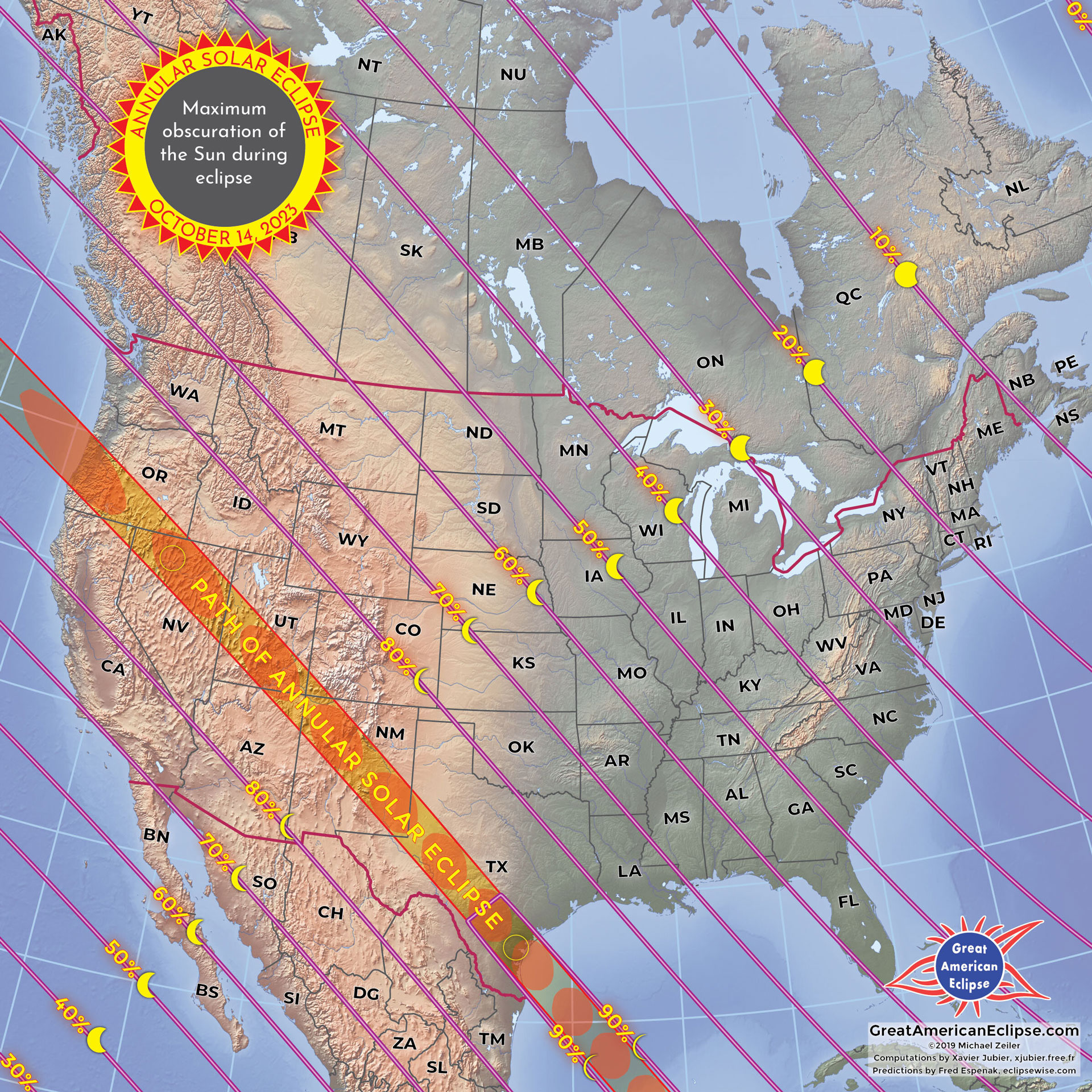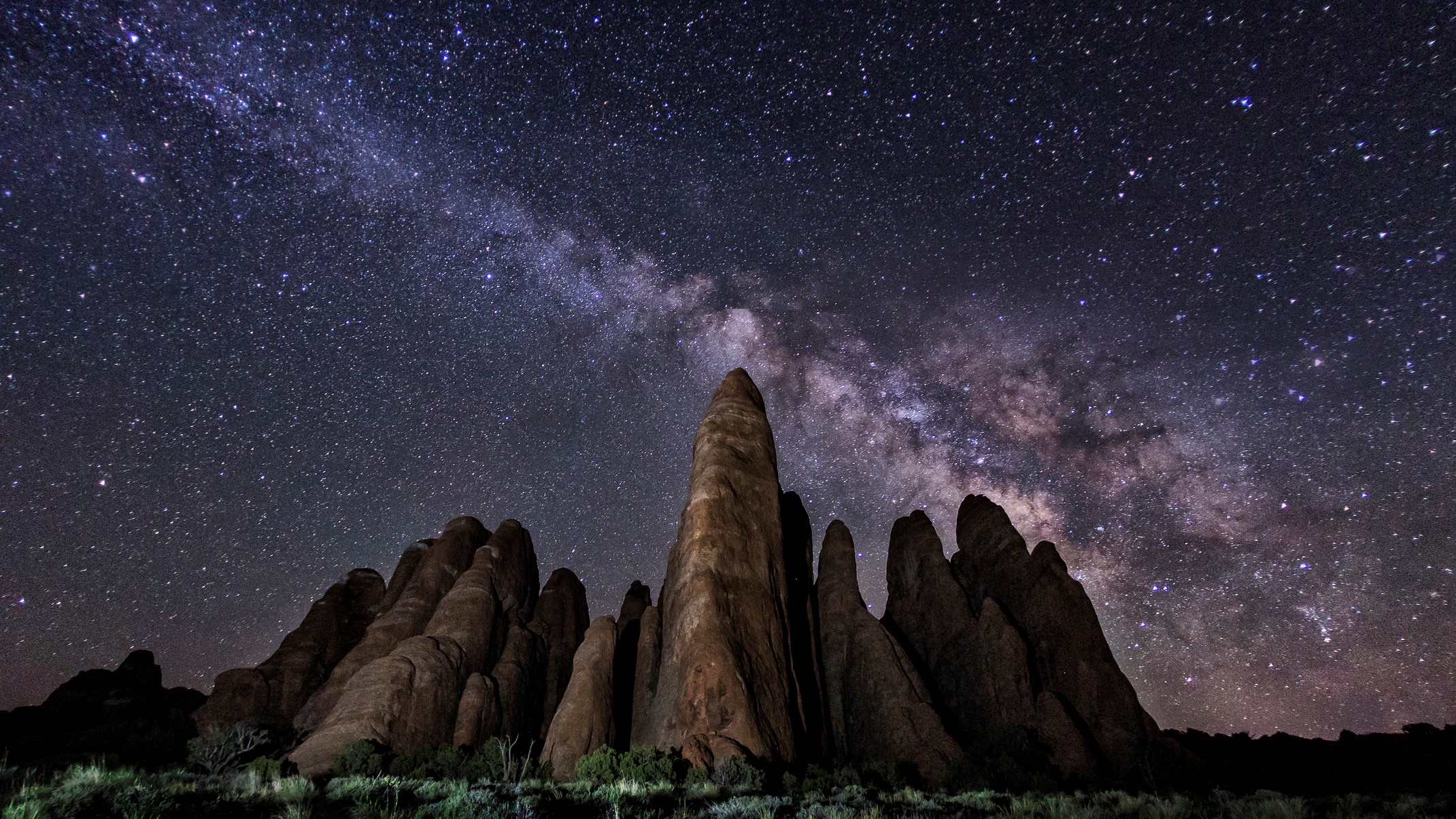Annular solar eclipse October 2023: Plan your trip to see the amazing 'ring of fire' eclipse with these top tips
From choosing a location to being properly equipped, here's how to get organized for the annular solar eclipse.

Are you organized for the rare annular solar eclipse on Oct. 14, 2023?
Although a partial solar eclipse that day will be visible across North, Central and South America, the 'ring of fire' around the moon will only be observable from a narrow path across Earth's surface.
In the U.S. that path runs through eight states in the U.S. Southwest from Oregon to Texas, according to NASA, but it will pay to get clued-up and organized well in advance.
Here's everything you need to know to go eclipse-chasing in the U.S. Southwest this fall:
Related: 'Ring of fire' from US national parks: 7 great places to see the annular solar eclipse 2023
Prioritize clear skies
Maybe you want to watch the eclipse in a beautiful natural setting, perhaps alone or with loved ones. Or maybe you'd rather be at a guided observing session where telescopes are set up for a close-up and where scientists are on hand to explain what's going on. Either way, always prioritize clear skies.
If it's cloudy where you are you won't see a thing. If you're heading for the path and a view of the 'ring of fire' then check climatic predictions well ahead of time and make plans accordingly. More importantly, inspect and react to weather predictions a couple of days before the big day. Only then should you nail down your intended location.
Breaking space news, the latest updates on rocket launches, skywatching events and more!
Related: Solar eclipses 2023: When is the next solar eclipse?
Head to the centerline for the longest 'ring of fire'
Reading an eclipse map doesn't come naturally to anyone so learn the essentials to get the view you want. On October 14, 2023, the path of annularity will move from the Oregon coast southwest to Texas. As it strikes Oregon it will be 137 miles wide, but by the time it leaves Texas it will have narrowed to 118 miles. Although anywhere in North America will get you a partial solar eclipse you must be within the orange strip (in the map above) to see a 'ring of fire'. However, the closer you are to the centreline of that path, the longer the ring will be visible for.
Related: This epic NASA map shows where to see US solar eclipses in 2023 and 2024
Respect indigenous cultures
In Sept. 2023, it was announced that all Navajo Tribal Parks will be closed from 8:00 a.m. until 1:00 p.m. MDT on October 14, 2023, due to Navajo cultural beliefs surrounding the event. This includes Monument Valley Navajo Tribal Park, Four Corners Monument Navajo Tribal Park and parts of the Tséyi’ Diné Heritage Area in Canyon de Chelly National Monument. Local businesses may also be closed.
The likes of Monument Valley Tribal Park and Canyon de Chelly National Monument in Arizona might seem like ideal places to watch the eclipse, but bear in mind that the Navajo culture sees an eclipse as literally the death of the sun. "You might think that everybody wants to jump up and down and scream and be excited and have fun, but there are cultural sensitivities that we need to be looking out for in the U.S. Southwest," says Cherilynn Morrow, Outreach Director for NASA's sun-themed PUNCH mission. "Some people will be inside fasting and praying." In Navajo culture, an eclipse is called jóhonaa'éí daaztsą́ ("the sun is dead"). The sun is said to be reborn again as the eclipse ends. It's a sacred event and across the Navajo nation people will stay at home and avert their eyes, pray or meditate.
Related: The Native American night sky: 7 starry sights to see
Expect crowds and plan accordingly
About six million people live inside the path of the annular solar eclipse, almost two-thirds of them in Texas according to GreatAmericanEclipse.com, so expect crowds — particularly in big cities like San Antonio, Texas and Albuquerque, New Mexico (both of them in the path and both considered 'ground zero' for this eclipse).
If you're anywhere near those two cities plan for heavy traffic after the eclipse. If you want a solitary experience then stay over at your observing location and/or head to Nevada, Utah, Arizona and Colorado, where the path of annularity is lightly populated yet packed with scenic spots.
However, book ahead if you want to be in a State Park of National Park, with the likes of Crater Lake National Park in Oregon, Great Basin National Park in Nevada, Bryce Canyon National Park and Canyonlands National Park in Utah (all of them also International Dark Sky Parks) as they are bound to be busy.
Organize a stargazing-themed road-trip
Why not plan a night sky road trip that takes in the eclipse? The timing is perfect because solar eclipses, by definition, always occur at New Moon, which is also when night skies are at their darkest. By coincidence, the path of this eclipse either moves across or is close to, a lot of International Dark Sky Places.
Related: 21 amazing dark sky reserves around the world
There are way too many to visit in one trip, but almost all the National Parks in Nevada, Utah and New Mexico have protected dark skies, as do many State Parks and National Monuments. Just a few of the many International Dark Sky Parks in the path include Capitol Reef National Park and Goosneck State Park in Utah and Mesa Verde National Park in Colorado while close to the path are Yosemite National Park in California, Grand Canyon National Park in Arizona, Arches National Park in Utah and Enchanted Rock State Park in Texas.
Related: The ultimate guide to planning epic stargazing road trips in the US southwest
Upgrade your solar eclipse glasses
This is a rare event that happens only once in a while, so get yourself a close-up. Since an annular solar eclipse is, technically speaking, just a particularly beautiful partial solar eclipse, solar filters are required at all times. That doesn't mean you have to use a pair of cardboard solar eclipse glasses. One option is to get some of American Paper Optics' Plastic Eclipser HD Glasses, which are sunglasses-style solar filters that are much more hard-wearing and comfortable to wear than the cardboard versions.
Get a close-up
If you want a close-up then buy a pair of binoculars with solar filters built-in to the objective lenses. Examples include the Lunt 8x32 SUNoculars and Celestron EclipSmart 10x42mm Porro Solar Binoculars, though the smaller the magnification the easier it is to find the eclipse in the sky. If a small telescope is preferable, choose between a high-end Lunt 60mm solar telescope and something more affordable like the Celestron EclipSmart Travel Solar Scope 50. If you're feeling crafty you can make your own solar filters for an existing pair of binoculars or any telescope using Thousand Oaks Optical solar filter sheet.
Related: How to observe the sun safely (and what to look for)

Jamie is an experienced science, technology and travel journalist and stargazer who writes about exploring the night sky, solar and lunar eclipses, moon-gazing, astro-travel, astronomy and space exploration. He is the editor of WhenIsTheNextEclipse.com and author of A Stargazing Program For Beginners, and is a senior contributor at Forbes. His special skill is turning tech-babble into plain English.







